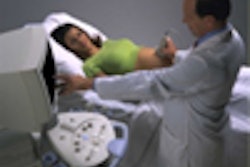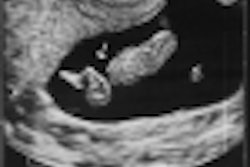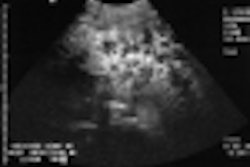(Ultrasound Review) A recent study evaluated the importance of assessing organ parenchyma during ultrasound screening after blunt abdominal trauma. Radiologists and surgeons from the University of California San Diego Medical Center analyzed the results of 172 patients that were found to have evidence of abdominal injury due to blunt trauma on the basis of clinical data, imaging, laparotomy, or autopsy. The findings were published in the June issue of the Journal of Ultrasound in Medicine.
As is usual for patients with blunt abdominal trauma, seven abdominal regions were sonographically examined for evidence of free fluid – the right and left upper quadrants, the epigastrium, the right and left paracolic gutters, the retroperitoneum, and the pelvis. Additionally, the heart, liver, spleen and kidneys were also scanned for evidence of injury.
When the patient’s bladder was empty, 250–300 ml of sterile saline was introduced via a Foley catheter to better evaluate the presence of pelvic fluid. Most examinations were performed using a 3.5 MHz sector probe, a 2.25 MHz or 5.0 MHz were available when required. Ultrasound showed evidence of hemoperitoneum (free fluid) in 126 patients. Forty-four patients without evidence of hemoperitoneum were diagnosed with parenchymal changes or small retroperitoneal collections using ultrasound.
There were 25 patients without ultrasound signs of trauma that consequently showed positive finding on "repeat ultrasonography, subsequent computed tomography, or diagnostic peritoneal lavage performed for suspected occult injury on the basis of clinical parameters," the authors stated.
Of the 126 patients with sonographically detected hemoperitoneum, ultrasound demonstrated parenchymal abnormalities in 47 patients that enabled localization of the site of injury. The ultrasound findings for parenchymal injury included parenchymal hyperechoic or hypoechoic lesions, echogenic masses or collections, and organ contour abnormalities.
The authors concluded, "In our series, 26% of all patients with documented injuries had no free fluid visible on screening ultrasonography. Attention to findings other than free fluid allowed detection in 43% of injured patients without sonographic evidence of hemoperitoneum."
"Importance of evaluating organ parenchyma during screening abdominal ultrasonography after blunt trauma"Michèle A Brown et al
Giovanna Casola, Dept of Radiology, University of California San Diego Medical Center, 200 W Arbor Dr, San Diego, CA 92103, USA
J Ultrasound Med 2001(June); 20:577–583
By Ultrasound Review
July 24, 2001
Click here to post your comments about this story. Please include the headline of the article in your message.
Copyright © 2001 AuntMinnie.com



















